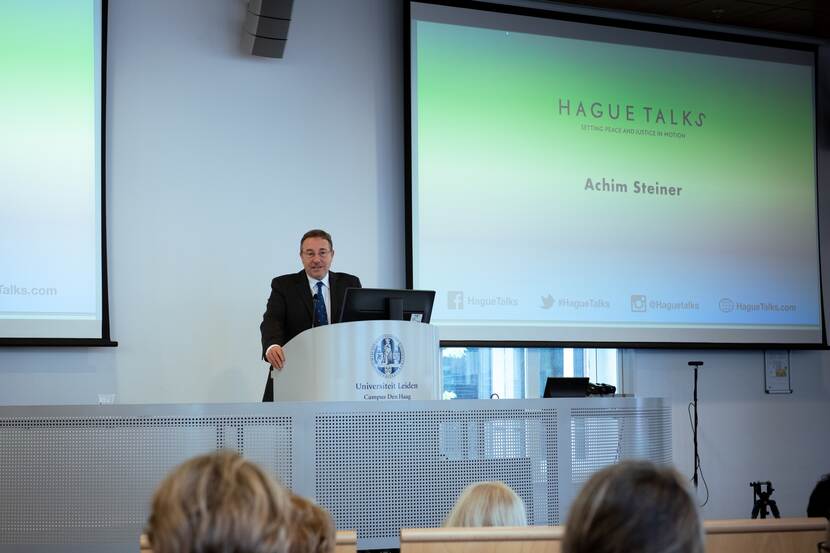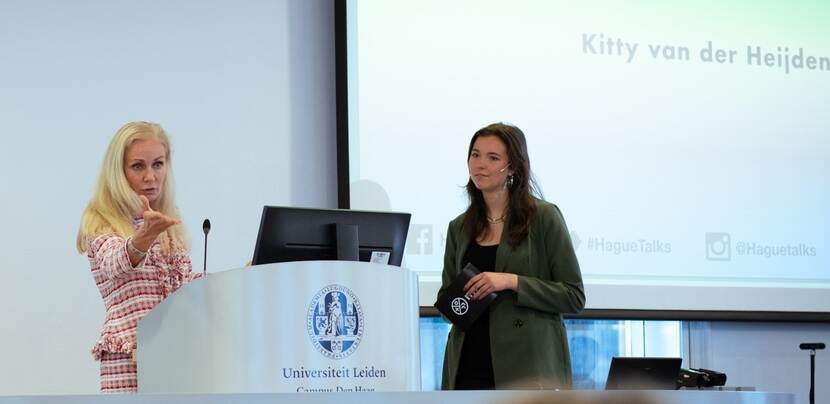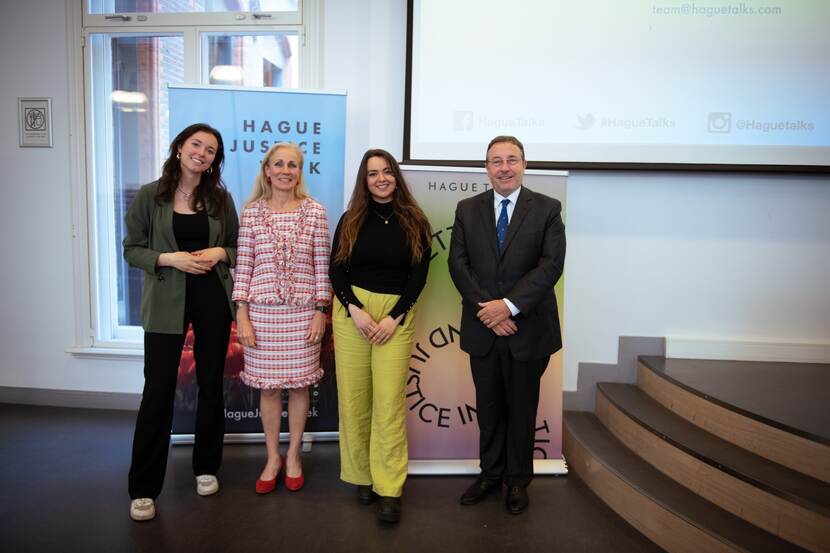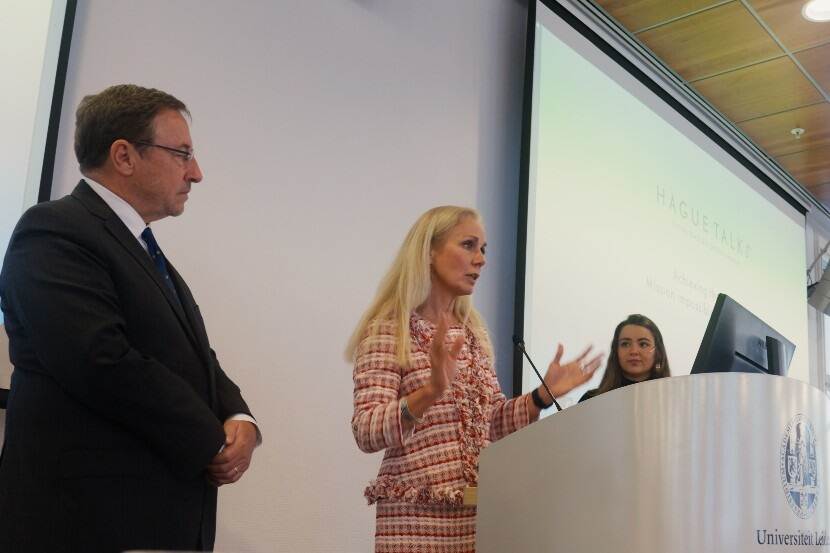Achieving the SDGs by 2030: ‘Calling it mission impossible is not an acceptable answer!’
In 2015, 193 member countries of the United Nations agreed to 17 Sustainable Development Goals (SDG’s), to be achieved by 2030. The road to 2030 is now at its halfway point. That raises the question: are these goals still within reach? Or are they becoming mission impossible? Achim Steiner of the United Nations and Kitty van der Heijden of the Dutch Ministry of Foreign Affairs dove into this question during an interactive session with a group of enthusiastic students at Leiden University.
Enlarge image
‘Incredible progress has been made to advance all 17 SDGs – from efforts to end poverty and hunger to improving water and sanitation to expanding access to technology and making cities more sustainable. That work has not always been easy,’ says Steiner, Administrator of the United Nations Development Programme (UNDP) during a visit to The Hague. ‘At present, the world is going through a wide variety of challenges. Violent conflicts in different regions of the world are dominating the news; climate change is forcing more and more people to leave the place they call home; and a cost-of-living crisis has tipped millions of people into poverty. This is reflected in UNDP’s latest Human Development Index, which measures a nation’s health, education, and standards of living. It has declined globally for the first time ever in the wake of multiple crises including the COVID-19 pandemic. It can be hard not to lose hope when confronted with a world in flux,’ argues Steiner.
A different approach
‘This new reality requires a change in the way we all approach the SDGs,’ Steiner explains. ‘We need to shift our thinking from ‘what is happening to me’, to ‘what is happening to us’.’ He realizes that achieving 17 very ambitious objectives can sometimes feel overwhelming. ‘However, it not about individuals having to address all SDGs simultaneously. Anyone person or community or business can commit to addressing one or more SDGs based on their priorities – ultimately enabling us to collectively address all of them over time,’ says Steiner.
Enlarge image

‘People also need to realize that the SDGs are already part of their daily lives. Whether you talk about new approaches to food waste, renewable energies, or gender and social equality: these are shifts that are helping to advance the SDGs – whether one is conscious of them or not.’
As the world’s population passes eight billion people, there is now the largest generation of young people in history: 1.8 billion adolescents and youth aged between 10 and 24. ‘They are pushing for the change we urgently need in areas like climate action. Yet sometimes I feel that we expect too much from young people – it is unfair to put the burden of the past squarely on their shoulders,’ says Van der Heijden who will take up a position as Deputy Executive Director at the United Nations Children’s Fund (UNICEF). ‘Young people have a voice, but without support from politicians and governments, their voice will not be heard as clearly as it should be. Day-to-day politics often take priority over long-term commitments such as the SDGs. All countries can and must do more to account for the rights of future generations.’
Enlarge image

Young people have a voice, but without help from politicians and governments, their voice will not be heard as clearly as it should be. Van der Heijden emphasizes the role of politicians when it comes to working on SDG’s. ‘The SDG’s, but also the climate agreement of Paris for example, are politically endorsed. That much is clear. However, day to day politics often take priority over the long term commitments that are required to achieve the SDG’s by 2030. There is a lot to be gained there.’
Celebrating the wins
What could help politicians worldwide in embracing the SDGs is celebrating the success that has already been achieved, a sentiment that both Steiner and Van der Heijden agree upon. ‘Take Uruguay, for example, a country that runs almost completely on green, renewable energies. That’s a win to celebrate,’ says Steiner. ‘Or consider the Continent of Africa where incredible shifts are taking place. To take just one example: with partners including the Global Environment Facility, UNDP is rolling out The Africa Minigrids Program which is improving the financial viability; and investment in solar battery minigrids in 21 countries in Africa. This is a $65 billion investment opportunity to connect 265 million people, over 200,000 schools and clinics, and over 900,000 businesses to electricity — and the new opportunities that it brings including jobs and livelihoods. These kinds of game-changing efforts have all become possible because of global commitment to the SDGs, one of the only platforms on which all countries still agree upon to realise a better world,’ Steiner concludes.
Enlarge image

‘Calling achieving the SDGs by the end of this decade as mission impossible is not an acceptable answer. We need to keep going. We need to get people involved, create political awareness, and make bold investments now in a greener, more inclusive, and more sustainable future. That’s how we get where we need to go,’ says Van der Heijden.
Originally published at https://www.government.nl/latest/news/2023/05/12/achieving-the-sdgs-by-2030



